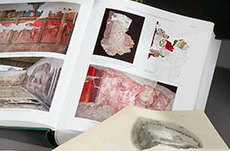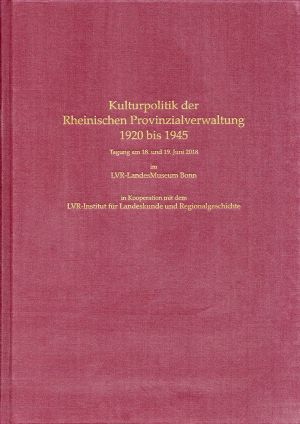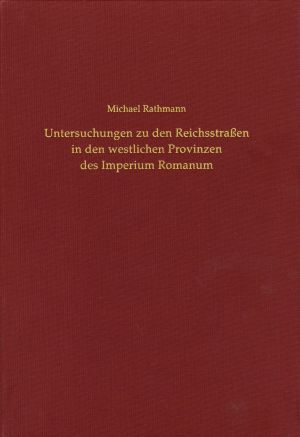Beihefte der Bonner Jahrbücher
Die Buchreihe steht für die Interessensgebiete der universitären historischen und archäologischen Forschung in der klassischen Altertumswissenschaft einerseits und die musealen Interessen des Bonner Landesmuseums andererseits. Ein Schwerpunktthema ist die Archäologie und Militärgeschichte des Rheinlandes, und auch klassisch-archäologische Themen finden hier Platz. Neben umfassenden Abhandlungen und Qualifikationsarbeiten sind auch Sammelbände, Festschriften und Kongressberichte erschienen. Vergriffene Bände werden durch die Herausgeber in lockerer Folge als Digitalisate eingestellt.

Editors
Redaktion Bonner Jahrbücher
LVR – Landesmuseum Bonn
Verein von Altertumsfreunden im Rheinlande (Bonn)
Bachstraße 9
53115 Bonn
Dr. Olaf Dräger
E-Mail: Olaf.Draeger@lvr.de
Coming Soon
Kulturpolitik der Rheinischen Provinzialverwaltung 1920 bis 1945
The Landschaftsverband Rheinland (LVR) is confronting its history - with a view to the Nazi past, this means: The LVR, as the successor to the Rhenish Provincial Association, is asking probing questions about its own past that previous generations did not want to hear. The LVR's cultural department occupies strong research positions: The 2012 conference “Archäologie und Bodendenkmalpflege in der Rheinprovinz 1920–1945“ looked at archeology as a cultural factor and a science of legitimation. One result: the provincial association was not on the sidelines when it came to implementing the regime's cultural policy goals. At the same time, the LVR-Landesmuseum Bonn is conducting provenance research on its collection. It also provided the forum for a conference in 2018 because pressing questions arose: How did the Nazi state's cultural policy prevail in the Rhine Province? Where did the Third Reich's state measures create or maintain structures at the provincial level, and where did networks and careers block each other? The results of the research are available as conference contributions.
Published so far
Unfertigkeit in antiker Architektur: Definitionen und Ursachen. Beiträge einer Sektion des Neunzehnten Internationalen Kongresses für Klassische Archäologie in Köln und Bonn am 23. Mai 2018
Almost no building of Greco-Roman antiquity is free of imperfections, although these vary greatly in type and extent. But what was perceived as unfinished in antiquity? What were the reasons for unplanned incompleteness? What was tolerated or even became a desired art form over time?
After a systematic introduction to the topic, seven contributions deal with humpbacked bosses and polygonal columns, then some case studies in Asia Minor - in particular the early Hellenistic mausoleum of Belevi, the late Roman eastern stadium gate in Miletus and several imperial buildings in Ephesus - and finally the huge Severan building complex in Leptis Magna (North Africa).
Untersuchungen zu den Reichsstraßen in den westlichen Provinzen des Imperium Romanum
The study focuses on the imperial roads in the provinces of the Imperium Romanum, their definition, administration, and financing. On Italian soil, a via publica is defined by legal norms, but for supra-regional roads in the provinces we are dependent on milestones along the route, the connections mentioned in the itineraries, and their representation on the Tabula Peutingeriana. The administration is carried out in Italy by road curators, in the provinces primarily by the cities, selectively supported by the governors; imperial interventions are rare. So the cities along the route are also responsible for its financing and maintenance.
Reviews: Gerion 22, 2004, S. 554f.; sehepunkte 5, 2005, Nr. 9; Gymnasium 112, 2005, S. 570f.; Museum Helveticum 62, 2005, S. 257; Historische Zeitschrift 282, 2006, S. 174f.; Latomus 65, 2006, S. 1072f.; Klio 89, 2007, 237f.; Anzeiger für die Altertumswissenschaft 62, 2009, S. 72-74; Gnomon 85, 2013, S. 342-347









